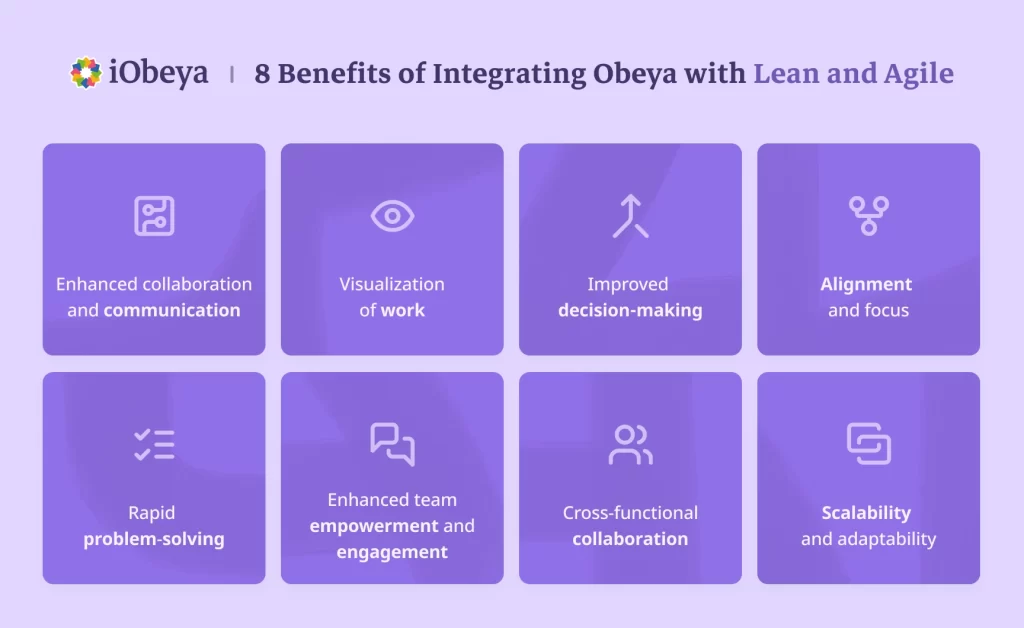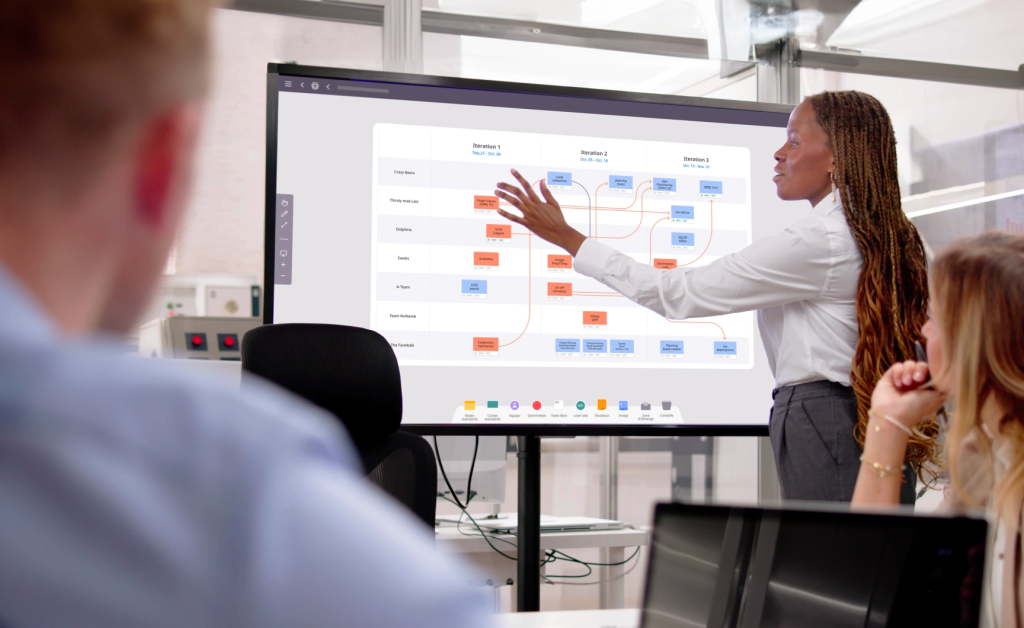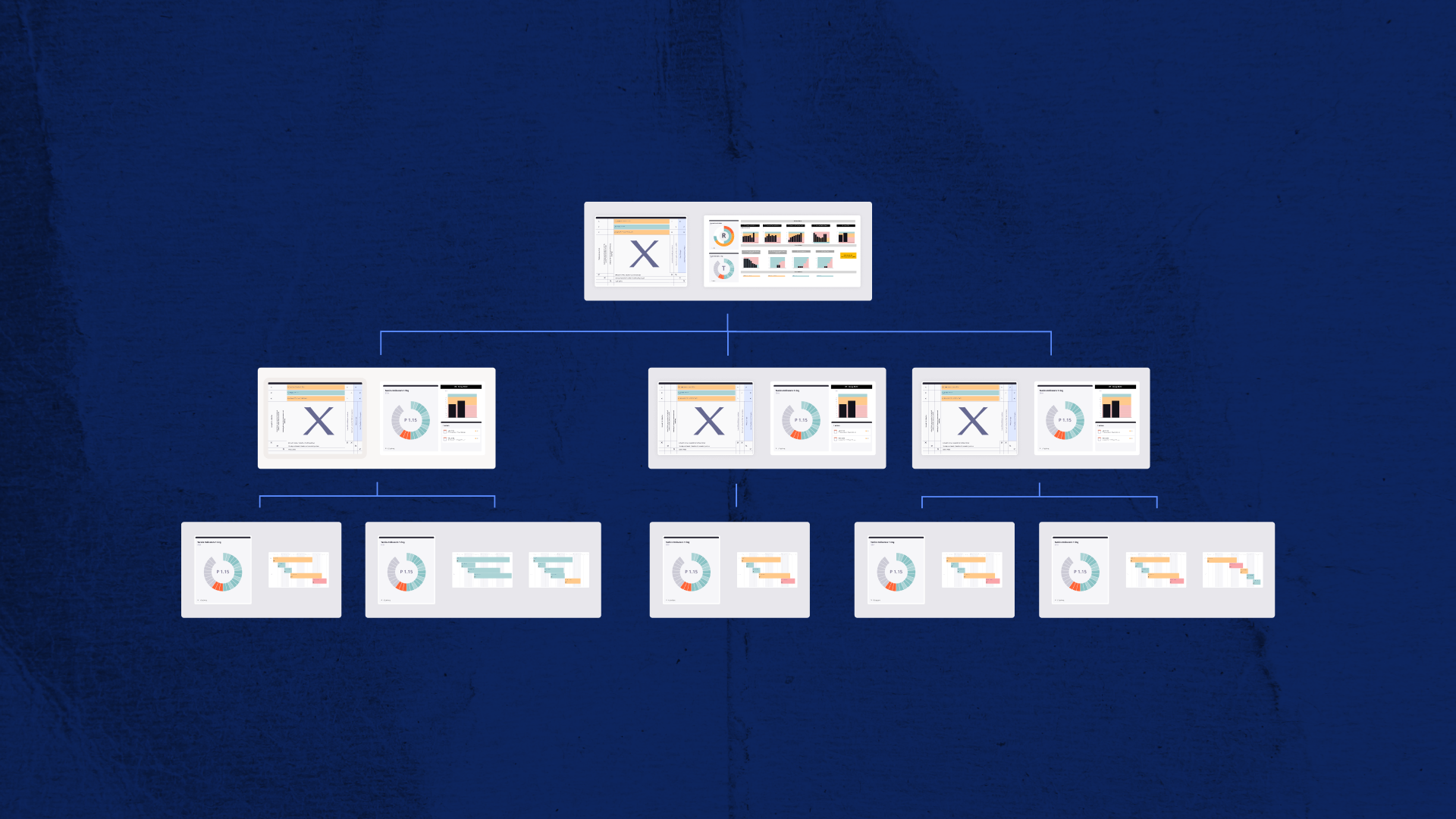Hey, let’s start your
iObeya journey!
Obeya , a term that originated from Japanese lean manufacturing practices, translates to “big room” or “war room.” It is a physical or virtual space where teams and cross-functional teams can collaborate, visualize work, and make decisions.
Lean, originally from manufacturing , and Agile, from software development, are methods now applied widely for their shared emphasis on efficiency, effectiveness, continuous improvement, and customer focus. Lean maximizes value and minimizes waste, while Agile champions adaptability and iterative progress. To boost these practices, executives are adopting Obeya as a strategic tool . This collaborative space aligns with Lean and Agile principles, uniquely enhancing collaboration, communication, and data-driven decision-making.
Benefits of Integrating Obeya with Lean and Agile Practices
- Enhanced Collaboration and Communication: Obeya rooms provide a centralized space for teams to meet, discuss, and review progress. This enhances communication and collaboration, which are core aspects of both Lean and Agile methodologies.
- Visualization of Work: In line with Lean’s emphasis on visual management , Obeya rooms feature visual tools like Kanban boards, flowcharts, and roadmaps . This makes it easier to understand work processes, identify bottlenecks, and track progress, aligning well with Agile’s iterative approach.
- Improved Decision-Making: The visibility of key metrics and project performance in an Obeya allows for data-driven decision-making. This is a principle of Lean (making informed decisions) and Agile (adapting based on feedback and data).
- Alignment and Focus: Obeya helps in aligning teams towards common goals. By having a shared space where objectives, key performance indicators (KPIs), and progress are clearly displayed, teams can stay focused on what is important, a key aspect of both Lean and Agile.
- Rapid Problem-Solving: The collaborative nature of an Obeya room fosters quicker problem identification and resolution. This aligns with the Agile principle of responding to change and Lean’s focus on continuous improvement.
- Enhanced Team Empowerment and Engagement: By involving team members in the decision-making process and giving them a clear view of how their work contributes to the overall objectives, Obeya can increase team empowerment and engagement.
- Cross-Functional Collaboration: Obeya rooms often bring together people from distinct functions, promoting a holistic view of projects and processes. This is beneficial in both Lean (for its focus on end-to-end value streams) and Agile (for its emphasis on cross-functional teams). /li>
- Scalability and Adaptability: While Agile practices are often associated with software development, Obeya can help in applying Agile principles to a broader range of projects and industries, aiding in scalability. Similarly, it can adapt Lean principles to different contexts.
Adopting Obeya practices can significantly enhance team collaboration, efficiency, and the effectiveness of your Lean and Agile practices. Key to this integration is customizing the Obeya approach to your team’s unique dynamics and workflow, ensuring it augments rather than disrupts existing processes. For example, teams might experience shorter, more focused meetings and clearer project visibility, leading to better decision-making and outcomes.
Taking Obeya Practices a Step Further: The Benefits of Digitization
To further enhance these benefits, many organizations are embracing digital tools for their Obeya practices. Digitizing Obeya not only streamlines collaboration and accelerates decision-making but also integrates seamlessly with existing Lean and Agile frameworks. This digital transformation can provide tools for real-time data analysis and facilitate effective remote collaboration, making it easier for teams to adapt and thrive in a Lean and Agile environment. Implementing digital Obeya tools is straightforward, offering an accessible way for teams to improve their efficiency and align closely with Lean and Agile principles.







